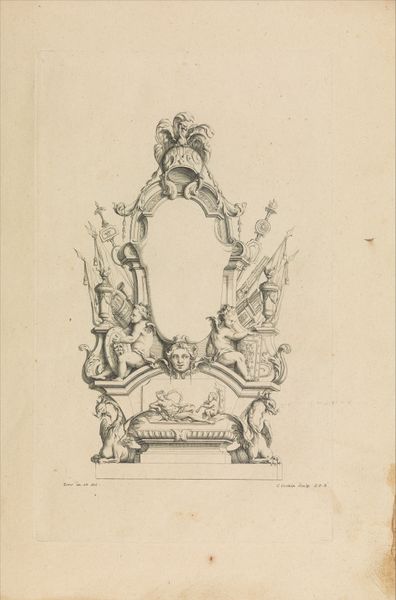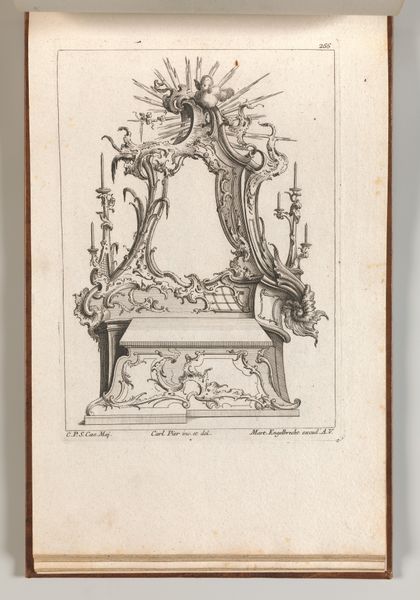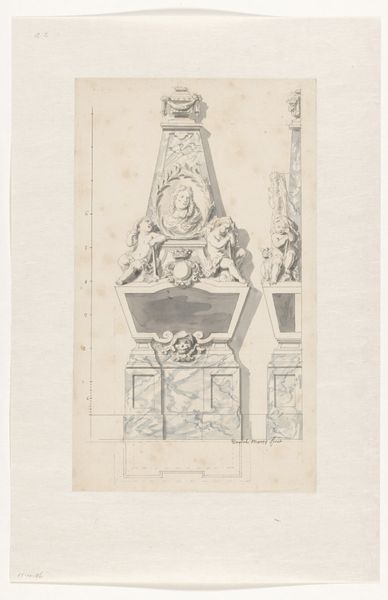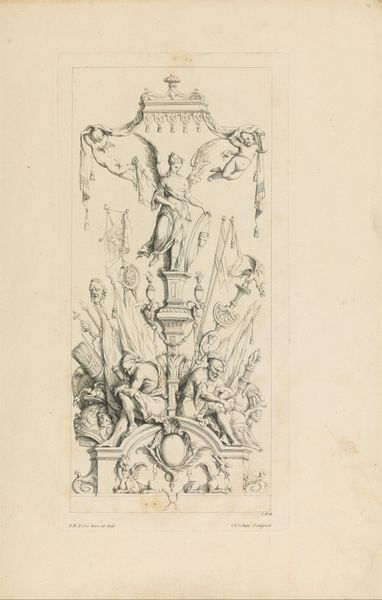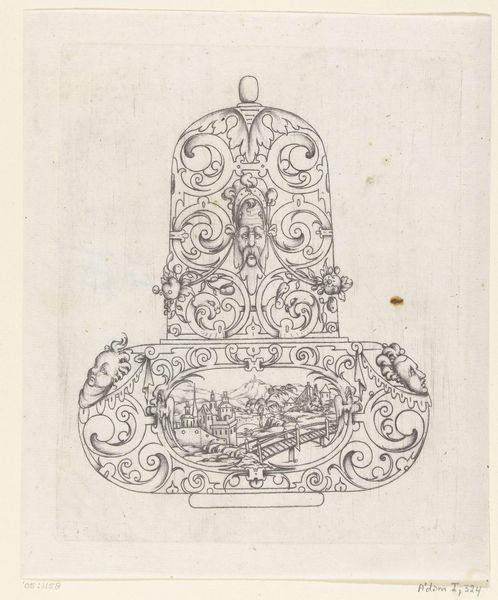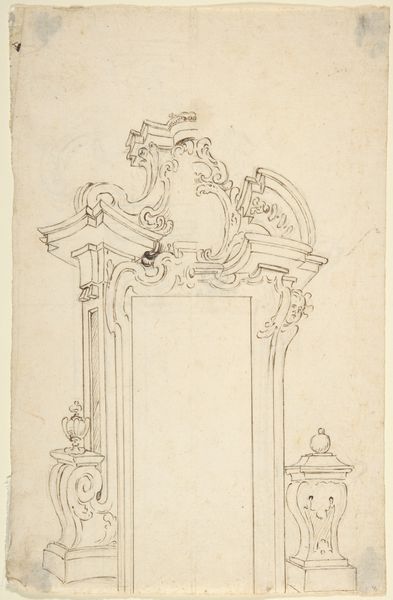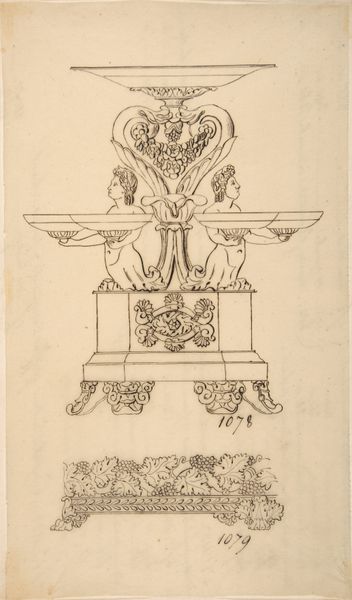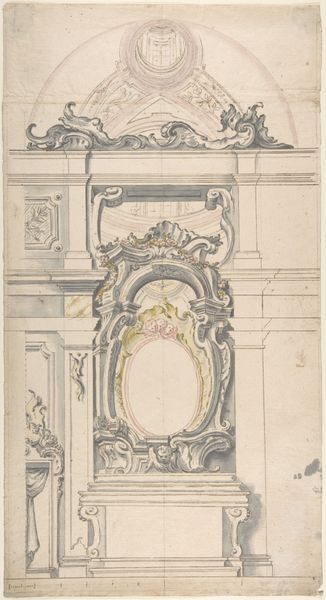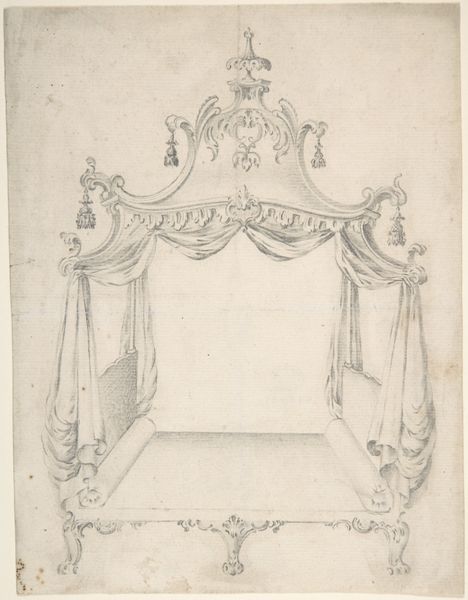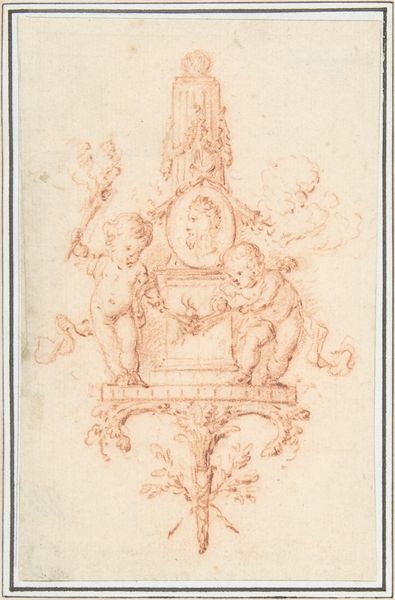
Cartouches Nouvellement Inventez par J.B. Toro 1716
0:00
0:00
drawing, print, engraving
#
drawing
#
baroque
# print
#
classical-realism
#
figuration
#
line
#
history-painting
#
academic-art
#
decorative-art
#
engraving
Dimensions: Plate: 12 13/16 × 7 3/4 in. (32.6 × 19.7 cm) Sheet: 15 15/16 × 11 5/16 in. (40.5 × 28.7 cm) [irregular edges]
Copyright: Public Domain
Curator: Here we have Jean Berain's design, “Cartouches Nouvellement Inventez par J.B. Toro,” dating to 1716, held at the Metropolitan Museum of Art. The print work reveals some truly ornate architectural and decorative elements. Editor: Ornate indeed! My initial impression is one of controlled exuberance, wouldn't you agree? A framework teetering between classical restraint and a wilder, more flamboyant aesthetic. Curator: Exactly! These cartouches, presented as both drawing and print, exemplify the high baroque. The image blends classical elements like the sphinxes with this almost grotesque mask at the top, embodying both order and a deliberate chaos. The design straddles that very tension between classical and baroque ideals which I think characterizes French decorative arts at this time. Editor: What role did prints like this have in shaping cultural tastes at the time? Curator: Well, this was the age of Louis XIV. Images of this nature directly influenced interior design and royal display, spreading style through elite consumption. The print facilitated accessibility, making designs like these, once exclusive, more available to a wider audience and therefore impacting society at multiple levels. Disseminating power of design, in a way. Editor: Fascinating. For me, looking closely at these flourishes and allegorical beasts, the piece invokes a sense of power and the sublimity of death and the afterlife, doesn't it? Curator: Absolutely. Think about the historical context. The cartouches themselves act as frames—potential portals. Consider also the pervasive use of symbolic imagery. These aren't merely decorations; they are cultural touchstones that would have resonated deeply, particularly among the educated elite. The sphinx, for example, serves as a guardian symbol – the mysterious intermediary between worlds, guarding what is held sacred. Editor: There’s something very psychological about how humans find order and stability represented in constructed forms of power, wouldn't you say? How design can impact belief. Curator: It’s as if Berain gives form to not only an architectural embellishment, but also to a whole system of symbols representing French social and political ideals. Editor: Thank you. This piece really epitomizes how cultural aesthetics translate into tangible artifacts. Curator: Yes, indeed, art constantly interacts with memory and identity to shape how people view their world.
Comments
No comments
Be the first to comment and join the conversation on the ultimate creative platform.
